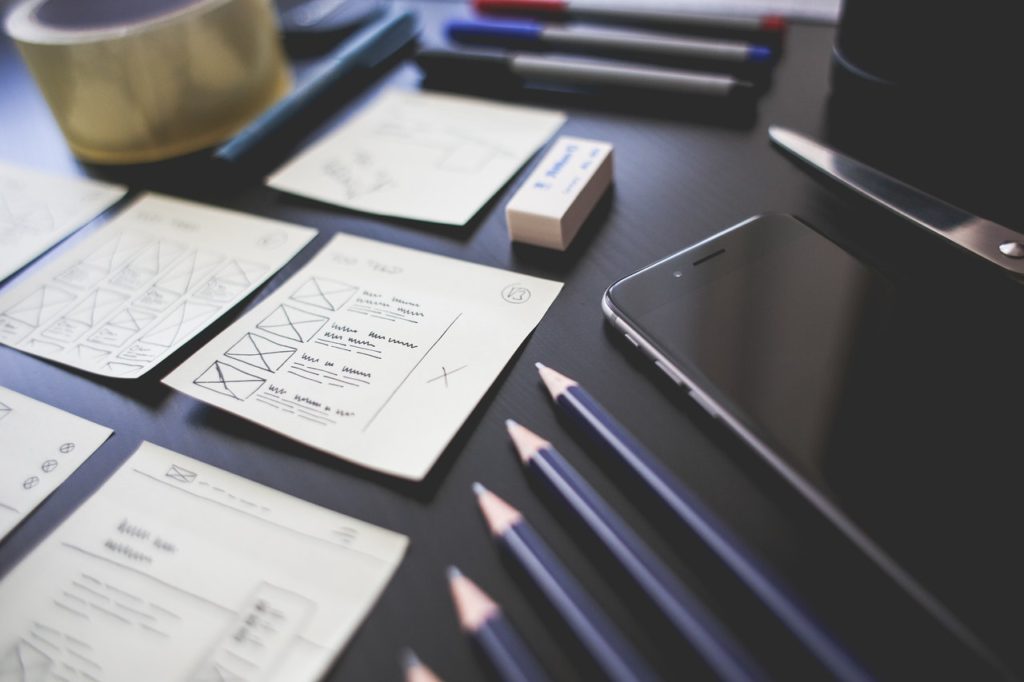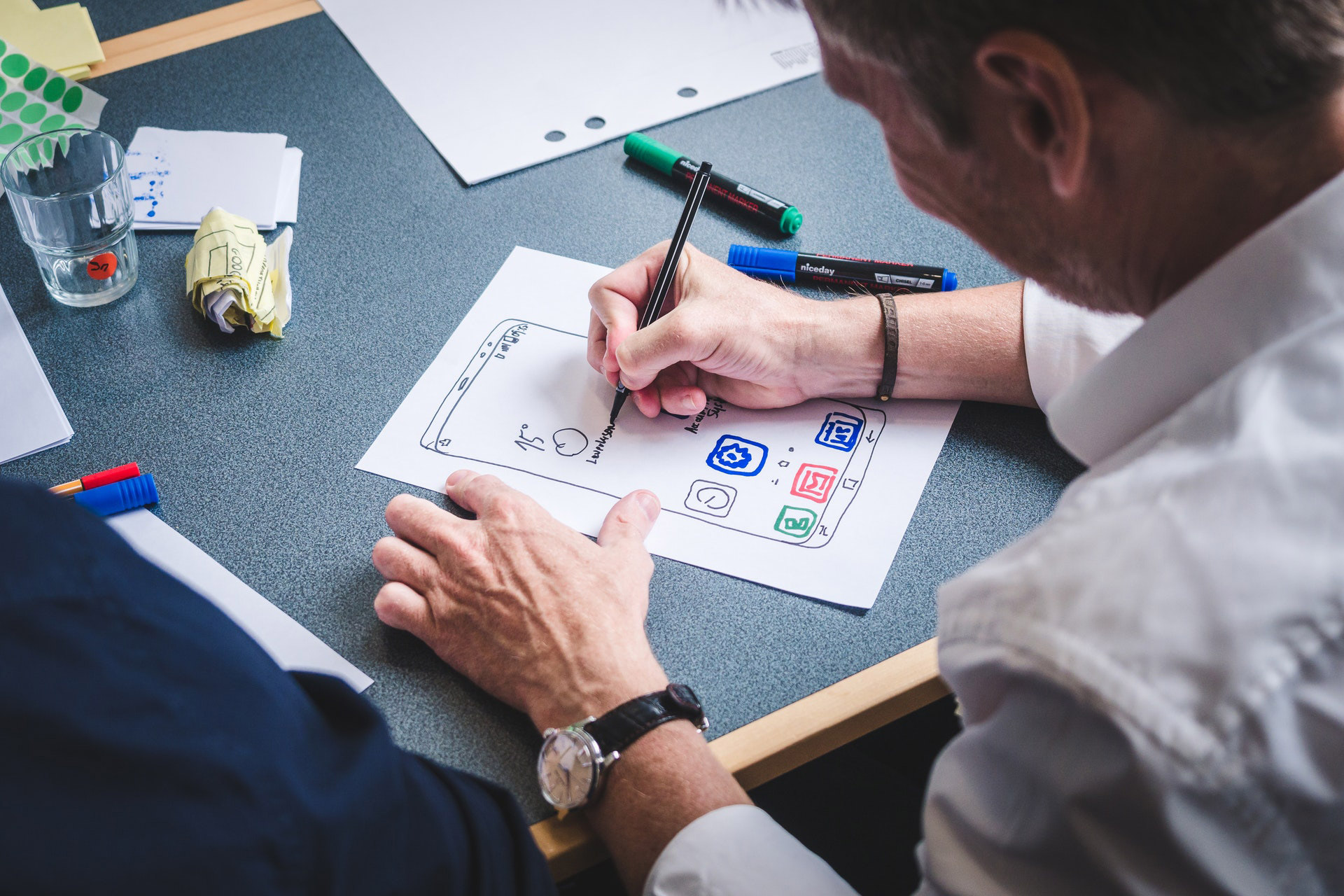As a business owner or a service provider, do you often wonder, how to optimize your UI and UX? How to design outstanding UX ? What can you do to make it a seamless journey for your user? What is the one process that can be followed to deliver outstanding UI/ UX experiences?
We at Yellow Slice have come up with a 4-Step Process that we also happen to call as STEP (Soak-Think-Execute-Proof) Process.
This STEP Process classifies the entire process into 4 tiny steps that act as the doorway to reach nearer to the optimal UX design.
What does STEP stand for?
To simply describe the STEP Process, in short, we would say:
- At SOAK, we try to gather whatever information pertaining to the project that we can lay our lands on.
- At the THINK stage, all the data gathered during the Soak stage is analyzed and definitive plans like experience visions are made. Here, user personas are also developed, which are worked along with use case scenarios to create user journeys.
- At the EXECUTE stage, the outcomes of the thinking stage are converted to design. The navigation and wireframes are finalized, the aesthetics are decided and we can see the whole idea finally taking shape.
- The PROOF stage is the final stage. This is the time to develop prototypes and test various versions and determine what would work best for the product.
Why the STEP Process?
We at Yellow Slice strongly believe in taking human experiences forward by delivering great experiences.
This process offers a high level of flexibility that helps increase productivity. With each step taken, we are moving closer to our goal. Moreover, the flexibility of the process makes it super customizable to amend the process to suit specific requirements. Also, the entire process is built in such a manner that makes it easy to jump from one step to another. This helps the team deliver in tandem as they work independently on their deliverables.
Another aspect that makes this process very adaptable is its easy entry and exit points. This helps various teams to work together while having sufficient accountability for their specific jobs.
STEP Process in Detail:
Now that we have had a glimpse of the STEP Process, let us look at it in detail.
SOAK

Soak is all about brainstorming and meeting with clients and stakeholders including target users.
We meet the client, understand their current business blueprints, and assess what can be done to make it better.
Understanding the target audience is also integral while working on UI/ UX.
In order to bridge the gap between business owners and users, stakeholder workshops are conducted. These stakeholders include advertising departments as well as other agencies and partners who are involved in everyday business. We understand their vision, point of view, ideas, pain-points, etc. These workshops are conducted in a structured framework to generate a standardized outcome. These outcomes, then help form problem statements and KPIs and deliver a vision document for the project.
We also work on formulating a stakeholder map. This map is an interplay of stakeholder power and interest in the project/ product. Power relates to the stakeholder’s ability to influence the system. Interest refers to the degree to which a stakeholder will be affected by the project. This map helps us understand the stakeholder roles in the product ecosystem.

Improvising
In order to improvise, it is important to understand the current state. Thus, the current state blueprints are plotted during interviews and sprint workshops with various stakeholders. This forms a base for user research, existing experience, and identifying pain-points and opportunities.
UX is all about being user-oriented. For this, we conduct primary and secondary research.
For the secondary research, we check with the data available the business and its marketing team. We also consolidate other surveys, research, customer service data, and other findings. This is then used to inform primary user research.
Under primary research, we conduct one-on-one interviews with various segments of focus groups. These research findings help us develop personas and user stories for the next stage.
THINK

This is the step where all the findings from the soaked stage are put to test. The findings are brainstormed and we try to come up with concrete strategies.
We document the key research findings and work towards setting a final goal.
Here, we also finalize a vision for the project. From here, we work towards achieving that vision towards the end of this project.
The vision ascertained here used as a goal and all other processes work around this achieving this vision.
User personas are created for each target group based on the research findings. These user personas are then used to create empathy maps to understand goals and motives as well as pains and gains. This is further helpful in creating user stories and journeys. These journeys then form a part of the UX Strategies and Task Flows.
Based on the determined task flow, a rapid prototype is built. This prototype considers the sitemap, navigation, and information architecture for the interface. Further, low fidelity wireframes are built based on all the decisions made at this stage.
EXECUTE

This is the stage at which all aspects that have been decided, are given a design-oriented and aesthetic outlook.
The first step here is designing the navigation of the website. As a part of this step, we understand basic workflows and solve problems based on usage. These solutions are then tested using methods such as A/B testing and tree testing.
Then, comes the wireframe designing. Here, what starts with a quick stretch and ongoing ideations and validations finally begins to take shape. As each element is finalized, we work on the overall layout and grid and its trigger points and various navigation styles. Eventually, we also work on the website size and its UI Ratios.
Once the basic structure is ready, we then begin to work on the visual language of the interface. We finalize the colors, typography, images, illustrations, icons, and info-graphics for the interface. We also consider the UI aspect of aesthetics and work upon the color flows, shadows, highlights, and proportions. This helps us deliver a fulfilling experience to our users.
Now that everything is set, we build a clickable prototype. This prototype helps us find and correct any shortcomings in the interface before its formal launch.
Over the entire process, we create many design elements for the brand. Once finalized, these elements are delivered to the brand for their future reference. These deliverables are usually either Sketch, Flinto, or Invision design assets.
PROOF

This is the stage where everything is tested to the minutest detail. We work to ensure that when the final product is delivered to our clients, it is absolutely fail-proof.
For this, we apply various methods such as A/B testing, heat map analysis, product adoption analysis, and design viability.
Moreover, at this stage, we compare the KPIs that were set at the beginning of the project to the executed project.
Apart from this, we also compare the final product with the decisive outcomes of various other steps. This helps us check if any element has not been perfectly synchronized with the research outcomes.
This is the process we at Yellow Slice preach and practice. What makes this process our favorite is its flexibility. The process here is less in-line and more modular making it a practical method to follow.
FAQs For Designing UX
What are the Major steps in UI and UX Design?
There are four major steps in UI and UX design: Empathize, define, ideate, prototype, and test.
What is the very first step of the Interface Design Process?
The very first step of the interface design process is to gather information and research.
What are the progressive steps in UI/UX?
The process steps in UI/Ux are SOAK, THINK, EXECUTE, and PROOF




![How a UX Researcher Can Save A Lot of Time and Money? [Read this Before Hiring] How a UX Researcher Can Save A Lot of Time and Money?](https://www.yellowslice.in/bed/wp-content/uploads/2023/12/Feature-Image-370x245.jpg)